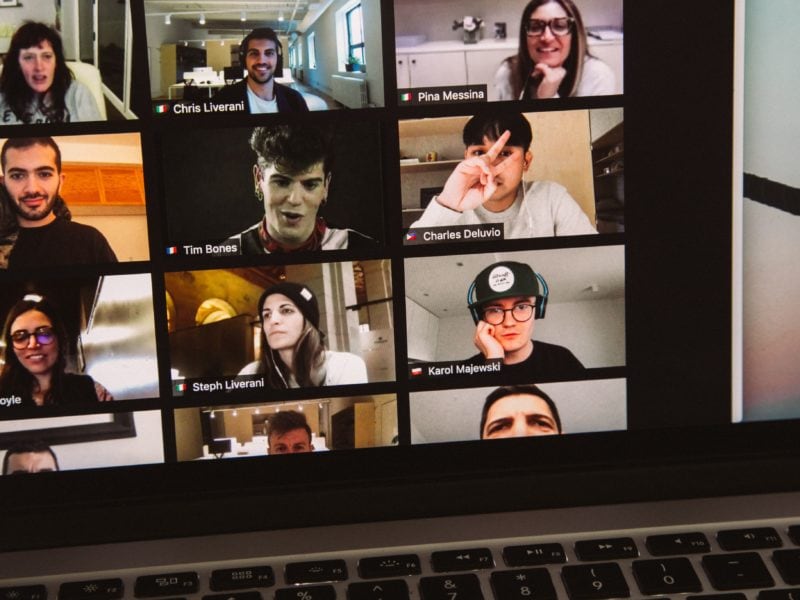People leaders must work with raised awareness of matching what they say with their behaviour if they’re to build trusted relationships. Best intentions aren’t enough you have to practise what you preach if you want to inspire the teams and people you serve.
Transformational change isn’t just about processes and systems. Behavioural leadership is the critical factor in making change stick.
Understanding the makeup of a team and the individuals within it is key to delivering a personalised leadership experience.
What’s it like to be on the receiving end of you? – Spending time talking to your people, listening and responding to how they feel enables people leaders to develop their leadership edge.
“Do what I say not what I do” can unintentionally become a way of leading that limits performance and stifles creativity.
fleur cook, client programme manager emerging-u
Total Reality
We’ve all been there; said one thing and done another right! Whether it’s a commitment to ourselves or somebody else what we say and what we do aren’t always the same thing. It’s a harsh reality that even with the best intentions as humans we don’t always practise what we preach. There can be a multitude of reasons for this and it’s often situational depending on our environment. Whether it’s at work or at home under pressure we contract and our behaviour defaults to what we know, what comes easy irrelevant of what we might have promised or said. The resulting behaviours can dramatically affect team dynamics including levels of trust, collaboration and communication.
“Do what I say not what I do” can unintentionally become a way of leading that limits performance and stifles creativity. In this article, I’m going to explore how we see this show up in the work we do with the aim of giving you some hints and tips on how you can look to make a change.
Behaviour Breeds Behaviour
Mooching, that’s what we call it when between focus groups and employee interviews we spend time observing what’s really going on in the office environment. How do people interact with each other? What’s the impact of the way people serve each other in an organisation on engagement levels, team effectiveness, productivity and ultimately the customer experience?
It’s never a surprise to us that it all starts at the top. Behaviours trickle down under pressure limiting or enabling the culture. We see it all the time; a manager with their head down deep in thought fails to notice their people trying to get their attention, looking for guidance so when a customer comes into their space, they overt their eyes and make themselves busy.
When addressing transformational change organisations often focus on the systems and processes that reduce effort and improve efficiency. What you do alone won’t create the conditions for success, equal focus must also be put into the how. What are the key behaviours that will create a thriving learning culture all whilst building employee and customer loyalty? A genuine commitment at all levels of a business to be the change. This is critical to making yourself easy to do business with, functionally and behaviorally.
“There appears to be a negative relationship between Emotional Intelligence and leader performance for managers who overestimate their leadership abilities.” (Bratton el at. 2011)
Authentic leadership is a buzzword in today’s workplace. There is no one best way to lead, it’s a mindset and set of skills that’s unique to every leader. There are some universal truths, the leaders who see the relationship between how they serve their people impacts the way they serve their customers are often the ones who work hard on how they show up. The reality is though as much as you may believe you get it right all the time, you don’t. Leaders, after all, are only human. So, in today’s constantly changing world acknowledging you don’t have all the answers and allowing your vulnerability to be revealed to your team creates a meaningful human connection with your people that builds trust.
Be Aware
I speak a lot about this in the world of yoga, becoming aware and conscious of your own behaviour, it can be a really uncomfortable exercise. It takes a lot of time and practice, tuning in to how others like to work, and how as a leader you inspire others and become easy to work with. It requires a level honesty that goes deeper, holding the mirror up to your own performance. Asking others what it’s like to be on the receiving end of you will reveal the unconscious blockers that are limiting your leadership practise.
An understanding that people leadership is about them and not you is a good starting point. Moving beyond ego to a place where the whole team are connected and served often creates the conditions for high performance to flourish.
“High performing teams found out others’ schedules, checked up on others’ progress, and maintained almost real-time synchronous interaction as the project neared completion. Teams learned enough social information about each other early in the process to know others’ preferences, work styles, schedules and habits.” p.324 Pamela et al 2002)
Understanding team members on a deeper level ensures easy and open lines of communication encouraging everyone to be open and honest about their current reality. This is where we use POP, The Power of Personality. To ensure colleagues and leaders alike understand the way in which a person likes to be communicated with, their work style and ultimately what’s driving their behaviour. Leaders who understand the make-up of their team can work with raised awareness of their own behaviour, focusing on what they need to dial-up or down to create a meaningful connection with their people. Let’s get real though, we’re not suggesting that personalising your leadership experience is about becoming a master of disguise and we’re not putting you into boxes. Rather, what we’re suggesting is a way of being that is empathetic and authentic, we all do this unconsciously all the time, we call it shape-shifting. Adapting behaviour to improve the human-to-human experience for your people will create a connection that is valuable to them increasing discretionary effort and improving performance.
Becoming a master of Behavioural Leadership
Are you a leader yourself? If you are it’s time to start looking inwardly as well as seeking some comments and feedback from the people you serve. If you’re not a leader, don’t wait for your leaders to change, remember they’re human too. Under pressure, blind spots expand, so if you’re on the receiving end of leadership gaps then ask for the change you want to see. If you’re falling into the “do as I say not as I do” trap, here’s some top tips we’ve found work for leaders who are serious about leading by example.
- Be compassionate it’s hard to honestly playback your behaviour to yourself. It’s also ok not to be ok so reach out. Ask for help. Give a bit more of yourself and find your human. Find out what you’re like to work with, the good, the bad and the ugly. And, if you’re on the receiving end of under pressure leadership blind spots, be brave. Challenge upwards. Be the change you want to see by demonstrating your own behavioural leadership edge whilst being compassionate that in that moment your leader is most likely trying their best. They don’t know what they don’t know unless you tell them.
- Be a team player when it matters most. Be mindful of how you react under pressure and notice how your reactions impact team dynamics. Watch out for your ego, being a leader isn’t a title or a job, rather a set of demonstrable behaviours which when applied at their best serve others to create the conditions for them to flourish.
- Be realistic and ambitious! To continuously improve and move forwards it’s important to have a clear vision of what the aspiration is and the energy to get there. Mind the gap by being honest about your starting point, it’s the first step in engaging others with the need for change. Respecting the current reality builds trust with your team leading to more innovation and improved discretionary effort.
Last Few Words
Today’s Leaders require new mindsets; to be more and offer more. It’s only by raising consciousness and transcending the operational that leaders can connect with their human and expand their options. Curious leaders make truly informed decisions and create new work systems; ecosystems that develop better people and a better workplace.
References
Bratton, V.K., Dodd, N.G. and Brown, F.W. (2011), “The impact of emotional intelligence on accuracy of self‐awareness and leadership performance”, Leadership & Organization Development Journal, Vol. 32 No. 2, pp. 127-149. https://doi.org/10.1108/01437731111112971 Accessed 10 Aug. 2021.
Hinds, Pamela, et al. Distributed Work. Google Books, MIT Press, 2002, books.google.co.uk/books?id=3aAwmlgC7YMC&dq=AWARENESS+OF+LEADERSHIP&lr=&source=gbs_navlinks_s. Accessed 10 Aug. 2021.





